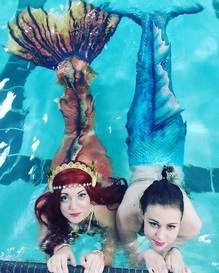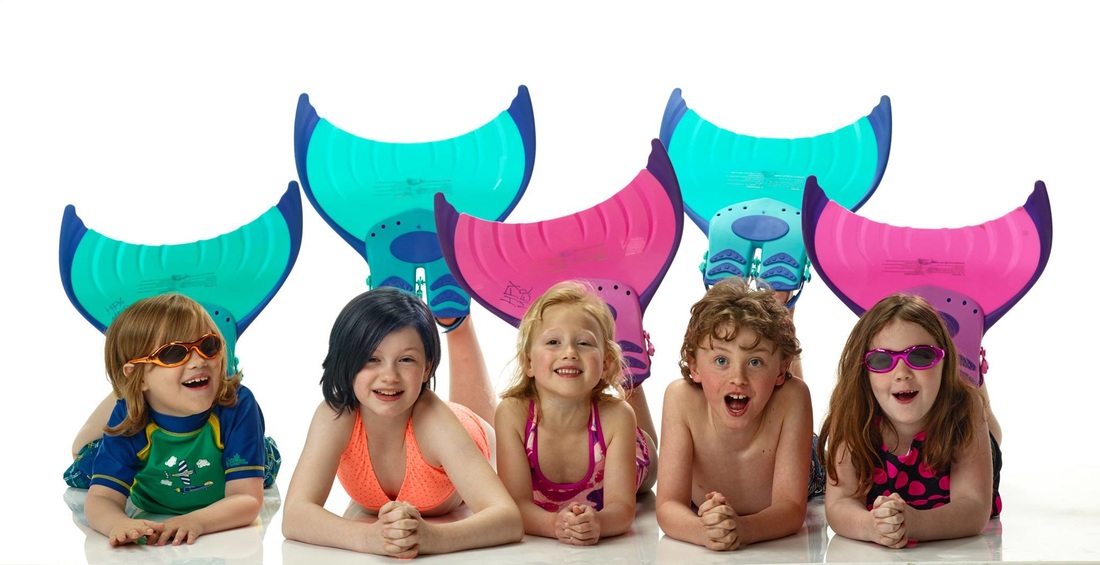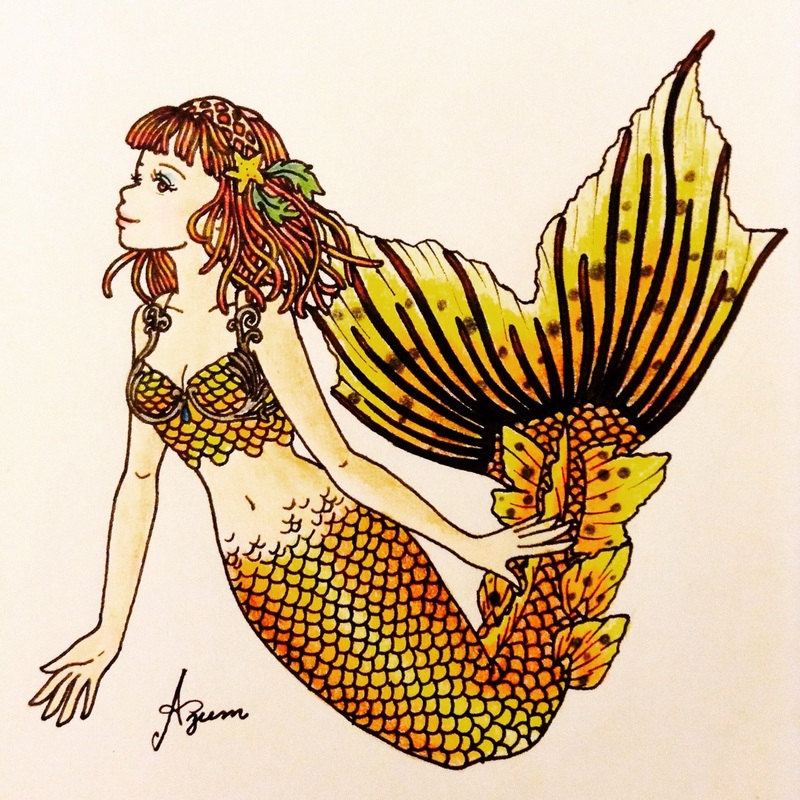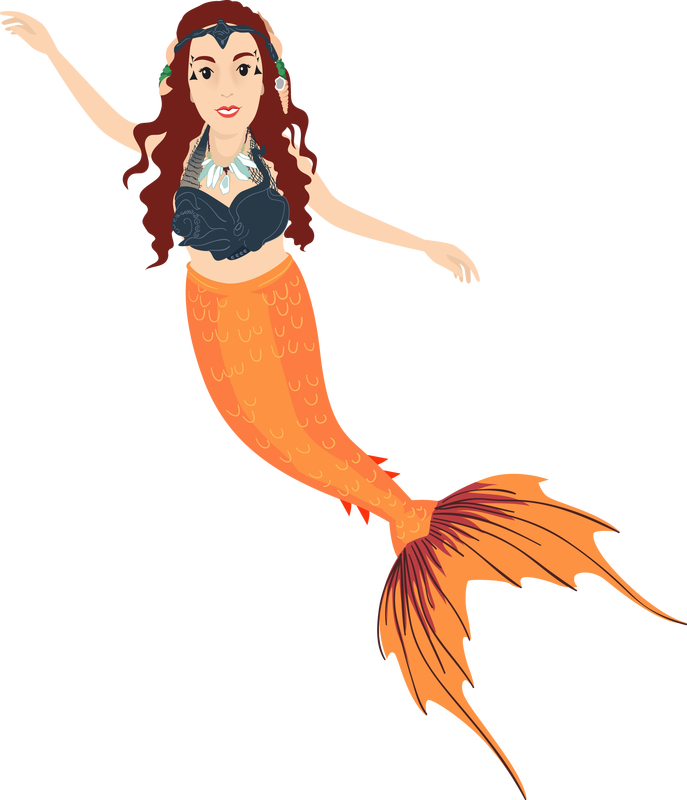|
I do not have any formal business background like my partner Sean who has multiple degrees and certificates. I have sought out my own learning by taking workshops, seminars, professional development, and reading books. A professional development workshop I took recently, focused on looking at why Walt Disney was successful, and how we can apply his method to our own businesses. I’d like to share with you, what I learned from this workshop! Are we as business owners mythical creatures?  Are we as business owners mythical creatures? In business, you are expected to be creative and come up with new ideas. Use your imagination and be innovative. But don’t do it too much! If you think too big, you’ll be told to keep your feet on the ground. So as a business owner you should be a source of innovation but also have a sense of reality. So how can we be both an excellent creative thinker, and an excellent administrator anchored in reality? Let’s consider Walt Disney! (clichéd I know… haha) he had the ability to change his giant ideas, into something practical. Think about it, 497 short films, 21 cartoon films, 56 action films, 7 true-life adventure films, 78 Zorro TV episodes, 330 hours of other TV programing, numerous technical innovations, numerous organizational innovations, and of course, the Disney parks! So how did he take all of those big ideas and make them reality? To understand Disney, we are going to consider the research of a guy named Robert Dilts. He is an NLP (neuro-linguistic programming) specialist and has done research on the practical applications of cognitive strategies and belief systems, creativity, leadership, education and health. He has analyzed and modelled the thinking strategy of such exceptional people such as: Einstein, Leonardo da Vinci, Mozart, Disney, and Freud. He’s published some amazing books and after researching him a bit, I think I’m going to go read the books! Here’s a few you may wanna look into: Visionary leadership Skills (1996), Effective Presentation Skills (1994), Tools of the Spirit (1997), Strategies of a Genius (1994), Next Generation Entrepreneurs (2015), and Journey into the Structure of Your Beliefs and how you create Reality (2011) So what did Walt Disney do to transform his dreams into reality? The course I took suggested he had to be 3 versions of himself in order to become successful (sound familiar, mer folk?) They suggest that he had to be: The Disney who had imagination (something I believe so much in, and promote with my own company), The Disney who was also a realist, and the Disney who criticized. Hmmm… Interesting. This comes from a quote from one of his colleagues: “In fact there were three different Walts: the dreamer, the realist and the critic. You never knew who was going to sit down at a meeting with you” ( side note: The course I took didn’t offer up who said this particular quote, and nothing on the internet tells me who said it. They claim it was said to them, so I suspect the courseware developers may have done their own interviewing about Walt to get this info. ) Bringing your ideas to success is about bringing these three parts we all have, together. The dreamer has ideas new objectives. It can’t function without the realistic who makes the ideas, and turns them into something concrete. But that’s all well and good, if you don’t use some critical thinking they are unlikely to work. That’s why the critic comes in, to evaluate these ideas, refine them, filter them and stimulates new ideas in the process. We’ve heard of the inner critic, the dreamer, and the realist. They must all work together to make our dreams a reality! Walt actually confirms the importance of this model in a quote about screen writers: “The author should see clearly in his own mind how each part of the story will fit together. He or she should feel each expression, each reaction. He should step back far enough to see it through different eyes, to see if there are lulls, to see if the audience will be interested in and attracted to the characters. He should also make sure that what they do is interesting”. – Walt Disney When we break that quote down, we can see what each section of it corresponds with: “The author should see clearly in his own mind how each part of the story will fit together”. This part of the quote pertains to the Dreamer. “He or she should feel each expression, each reaction.” This pertains to the realist. The part about stepping back, pertains to the critic. So what is the best way to dream? The best way to make a dream real? …and what’s the best way to criticize? How did Disney utilize each part of himself to be successful? Let’s look at the questions Why, how, and what and which aspect of the 3 types of Disney, fit with these questions! The dreamer is focused on the WHAT, and concentrates on their VISION and is interested in the long term. The realist focuses on the HOW, concentrates on the DOING, and is interested in the short term. The critic is focused on the WHY, concentrates on the LOGIC, and is interested in both the long and the short term. How can we dream more creatively? Focus on your vision, think big and globally, and itemize the content of your vision very precisely. When it came to Disney, he created a vision, he imagined every cinema screening his films, with his characters entertaining all ages, and he even thought of spin off products. Consider your mermaid business in the same way! What is your vision? Don’t just think small time, what would your business look like on a global scale? Would you have products? With my business, I started small with Halifax Mermaids, then I thought globally in terms of Canadian Mermaids but also the work I do around the world with conventions and training other mermaids. I incorporated products with the selling of my books, and monofins! So how could Disney obtain a global but still precise vision? Robert Dilts considered the notes that Disney had made on some of his cartoons. In his notes, Disney wrote “When I heard the music, it made pictures in my head. These are my pictures”. Disney created pictures from the sounds he heard. So the external stimulus of music, he took and changed into a mental picture, which he then put into an external version when he would create a drawing. He is using multiple senses to create a visualization of his dream. In my workshops and books I speak about multiple intelligences and how people learn and experience the world through more than just seeing, hearing, and doing. Music is also considered an intelligence, the same as writing, nature, spatial capacity, and inward and outward reflection. As a dreamer, when Disney had an idea for a project he could both see it in his mind, and feel it. By engaging all of his senses he was able to create a vision that was bot global, and precise. To us, this means we can increase our ability to really see our project and goals, if we can use more or all of our senses! Hearing, touch, taste, and sight. A good exercise to help you develop your idea is to ask yourself questions about your project in relation to your senses. Let’s pretend you have an idea for an event with your mermaid company. We will call this idea “the project”. What will you hear, see, touch, taste, or smell when your project is completed? My idea is to have a meet and greet near the ocean with my mermaids. I envision that I will see the people, the boardwalk, the local shops, and the beach. I imagine I will hear the chatter, the waves, the vehicles as they zoom by, and the sea gulls. I will taste the salt in the air, and I will feel the sun and the breeze. This is just a very simple visualization, but it gets you thinking about these senses and applying them to your vision! When I do this visualization, I am acting like a dreamer. I am imagining what it’ll look like when it’s completed, and visualizing how my senses will experience it. When I think of my senses it allows me to obtain more relevant information. To help you develop your dream, ask yourself these questions: What do I want to do, and why? What’s the goal and what are the benefits? How will I achieve my goal and when? Where do I want this idea to go in the future? Is there someone I want to be like, or who do I want to become? The next after dreaming, is the realist. The way you make your dreams come true. Dilts felt the reason why Disney was successful in being a realist was his ability to break down his dreams into parts, and then organize those parts into manageable units. A perfect example is how Disney first dreamed up a cartoon, and this lead to him inventing a storyboard- something that is now common place for film! Disney walked into a room that had recently been painted, and noticed some artists had displayed some of their artwork on the newly painted wall. When he examined the pictures he realized he could follow a bit of a story, so he decided to expand upon this idea by installing cork boards and encouraging the artists to display their artwork in a sequence. He focused on key events of the story to help develop the key ideas of the story for the film. This is what led to the storyboard being used as a main process in making films. The story board is a visual breakdown in order of the contents of the story. It explains sequences and the most essential elements needed to drive the story, and then breaks them down into more detailed levels. We can use a storyboard process to any kind of planning, such as a business plan or planning a project for your company! This quote helps shed more light on Disney as a realist, trying to feel the situation: “Walt always did the voice of some characters and he used to get himself so completely involved in the story that he couldn’t stop himself using their gestures and even their mannerisms and reactions while he was reading the script.” As a realist, Disney was able to empathize with his characters and adopt their personalities, along with seeing the world from their point of view. As a realist this meant Disney could see things from a different position. This applies as mermaids when we envision how our viewers and participants will see us when we perform, how listeners may see us when we speak about mermaiding or give a pitch, how the general public may see us when we give a TV interview. Another example would be considering changing up your business. Let’s imagine you’re going to apply a large change to help you make your dream a reality. As a realist you would put yourself in the shoes (or fins) of all those involved. Whether they’re your team, merwranglers, clients, etc. You imagine how they might feel and how this change will affect their daily life within your company. Just like the dreamer phase, we can ask ourselves key questions to help with the realist stage: Specifically how will my idea be put into place? How will I know the goal I’ve set has been achieved? How will success be tested and who will do it? When will each stage of my plan be completed? When will the final objective be completed? Where will each stage take place, and why is each stage of my plan necessary? Now let’s move on to the critic perspective. When Disney moved into his critic phase, he was no longer interested in the dreamer or realist perspective, he was only interested in the product. His colleagues nicknamed the room in which they would first review films “the sweatbox”. What did this mean in practice when he was only interested in the product? His colleagues explain that: He never spared people’s feelings. He was only interested in the product, and not in who had the best idea by this phase. (Or in who had not made a very good suggestion- it’s not that type of criticism) Disney studios were the first to spend time and money in doing the initial animation in black and white, so the team could appraise them. Disney said, “I found it astounding that we are the first group of animators that ever had the chance to look at their work and correct mistakes before they appear on screen!” The rough animation was projected on screen for analysis within the team. Each proposal was drawn, and redrawn, until the team could say “we can’t do any better”. In the critic role, you are looking at your project/business, from the third perspective. You become an observer and put yourself in the client or customer’s place, with objectivity and detachment. To understand the critic thought process you can ask yourself these questions: “Why would anyone oppose this new idea? Who will be influenced by this new idea? What will make it effective? What are the needs of the people I deal with, and how will this new idea benefit them? Where and when would I NOT implement this idea? What positive elements should I take away from my usual way of doings things? How can I keep these elements while putting this new idea in place? “ To be like Disney you must apply this mindset and try to predict problems, try to guarantee the best of the best (quality), create a criteria for how you will evaluate the idea and the success (how do you KNOW it will work?), make sure the idea stands up to that evaluation, stand back from the idea and look at it from another perspective including the customer or client’s point of view. Here is an example of Disney the critic: Disney was making a last minute inspection of one of his parks. He came to a scene that portrayed New Orleans, and he knew something was wrong. He felt like something was missing. He summoned all the staff from the park he could find, even including waiters and street cleaners. He asked if the scene looked correct. Disney had already included all the costume details, everything he could think of for the set to make it look authentic, and even included very tiny details. Then he went to the next sense: sound, and asked if the scene sounded correct. They had included all the sounds they could think of for New Orleans including music, people, and animals. Next he asked if the atmosphere felt correct. Even the temperature was set to make it feel like a hot New Orleans evening! Next he asked if it smelled right. They had gone to great lengths to recreate the smell of traditional New Orleans food, gun powder, brackish water, and even swamps! So what was missing? A street cleaner said, “Mr. Disney, on a beautiful night like this there should be fireflies.” To Disney, that was the answer! Disney actually brought in real fireflies until he could create and setup a device that would simulate them! This reminds me of the great lengths mermaids go to in order to make the experience seem as true to the mermaid myths as possible. With costuming, character acting, makeup, and consideration given to how we set up our space too! So far we have seen how to call in our dreamer, the realist, and the critic to make our ideas concrete. We have learned how to activate each of these by engaging visualization and question asking. But how do we put these three very different sides of ourselves together? It’s really, not easy, and many struggle with it. For most of us we will have one aspect that is stronger than the other. Often the dreamer and the critic will fight and ruin things for each other! (I know I can relate to that.) Often our inner critic clashes so badly with our inner dreamer that we end up doing nothing or even censoring ourselves. This is something I can also really relate to! It can also be so hard to manage these three when you’re working within a team, or answering to a team. You may be playing the role of a dreamer while someone else plays the role of the critic. This happens with Sean and I. I come up with these huge mermaid ideas and he is critical. Or sometimes we switch places and he comes up with these huge ideas and I’m the one who shoots them down. It’s funny while in the role of critic we actually often assume we’re really in the role of the realist because we equate our concerns with being realistic. How can we avoid these messes and make the 3 personalities work together either within ourselves, or when people within our group are taking each role? Dilts realized Disney was so successful because he was able to activate these three personalities and get them to work together within himself, without letting them fight. Dilts says, “One of the most common characteristics of genius is the ability to look at a subject from several points of view”. Disney took a different position for each aspect of his personality. He could be himself, and he could also identify with another person. He could also identify with his characters and put himself in his customer’s shoes. He could also look at the situation from the outside, at a distance. If we can describe our project, plan, or business from three points of view, it will give us more information than simply taking one view. To make a 3 sided description possible, we have to turn these ideas into concrete stages. For him that meant he moved through each phase sequentially and only be that stage one at a time. So Disney would first be the dreamer, than the realist, and then the critic. The critic would pass the ideas back to the dreamer who would then dream of solutions. By continuing this approach over and over the mindsets can be fully expressed without interrupting one of the other personalities or fighting internally (or externally!). Disney actually took the separation part seriously, and created three separate spaces where he could be each of these roles. The dreamer imagined in a small room with walls covered in drawings and ideas. The realist took to a physical drawing board as a space. The critic, had the sweat box! In our mermaid businesses it can help to follow this model to help achieve success. Your dreamer side may take place in your home, out in nature, or in a library. Really, the dreamer comes down to wherever you do your best imagining. Your realist may be your home office, or wherever you actually work on the logistics of your business. Your critic space may be an actual meeting room or meeting area (or even a digital meeting space like a group chat). For my business I would say my best dreaming is done in bed with a notebook, and that’s my dreaming space. I don’t worry about logistics or criticisms there, I just create my ideas. Then I do the actual “work” and logistics on my computer, in my desk, answering those questions. My critic place is a meeting room I rent out where I meet with my whole team and my mentors, it’s also in an online group chat we hold for our company. When you make these three stages part of the actual culture you run for your business, you can increase your success. Disney focused on constantly improving his quality through the use of these three stages, and protected his brand by always being willing to learn and improve. I really believe learning should be a lifelong process that doesn’t finish just when we finish school or a program! This has inspired me to read more of Dilts’s books, so I can learn what made other people successful! I hope it has inspired and validated you as well.
0 Comments
Your comment will be posted after it is approved.
Leave a Reply. |
RainaThe Halifax Mermaid Buy the BookLeave a Tip
Disclaimer:
The information in these blogs and video posts are for informational purposes only. Trying any of these suggestions are done so at your own risk. The creator/owner assumes no risk or liability and urges you to seek out professional training and advice.
Archives
August 2018
|











 RSS Feed
RSS Feed
